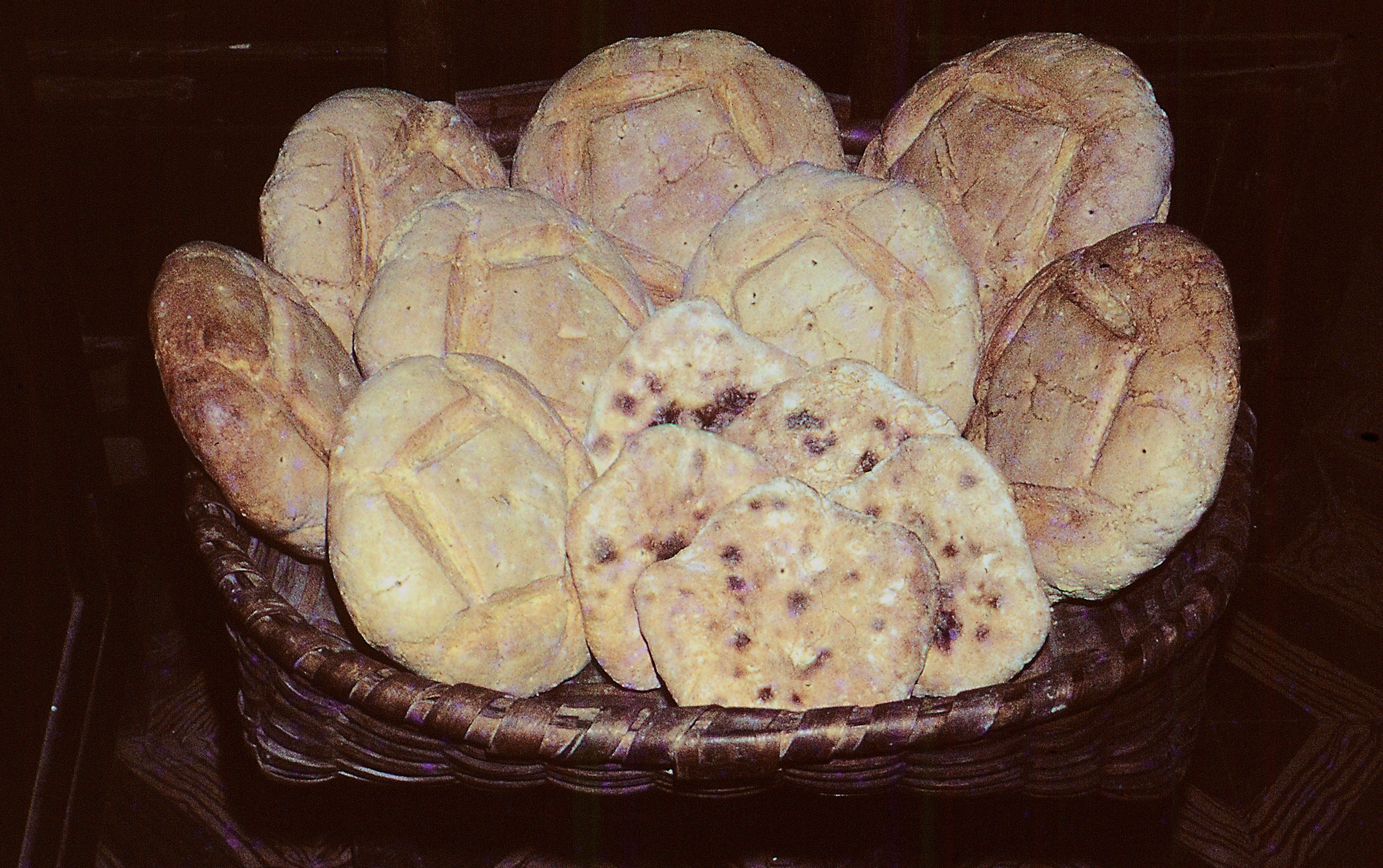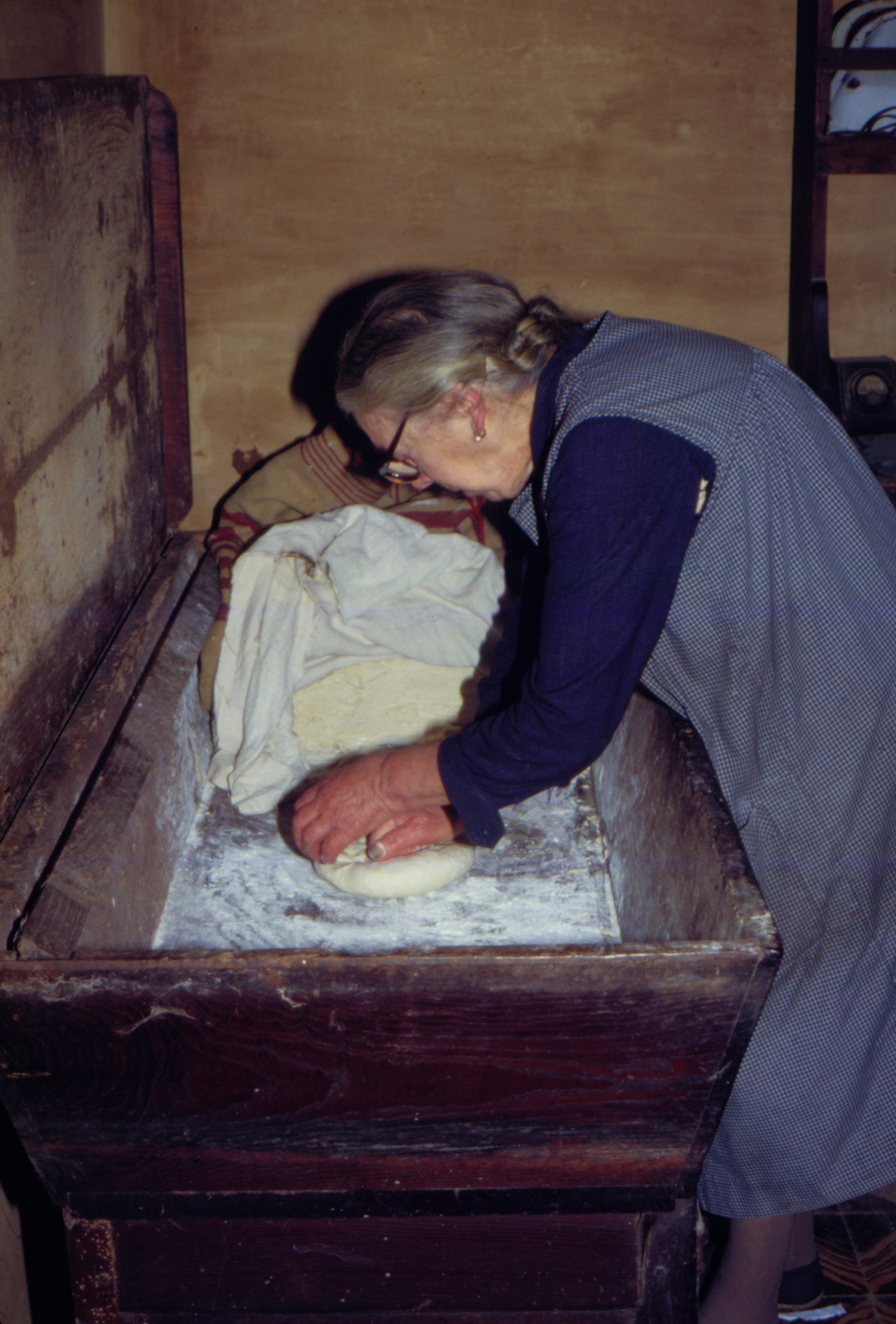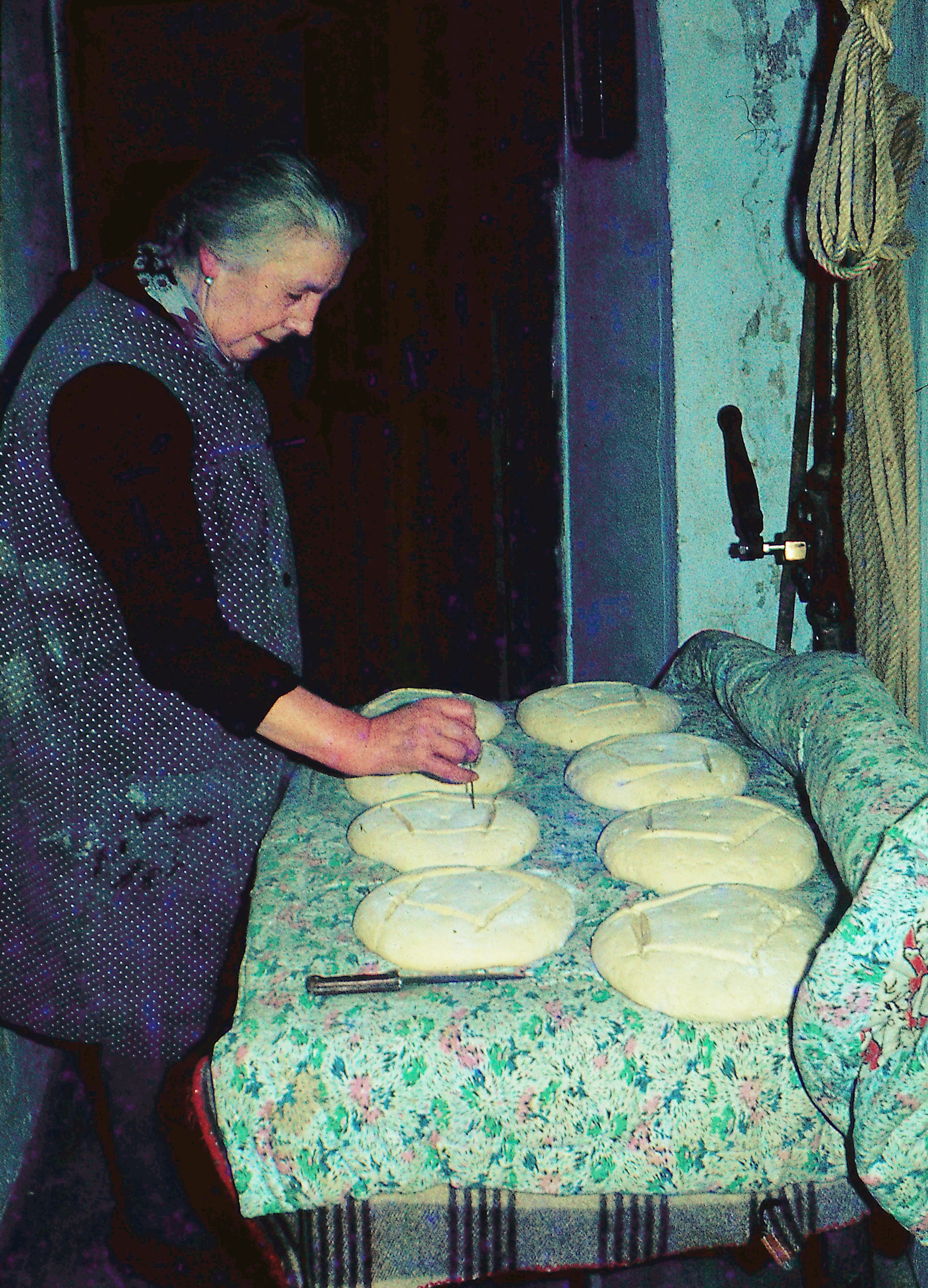Basque ethnography at a glance

Homemade batch of bread. Ander Manterola.
In a previous post, published on 20 July 2018, we began to tell the story of bread and shall now pick up where we left off.
Once grown and harvested, wheat grain was stored in large chests (kaxak) with a capacity of 7 or 9 bushels, more often than not made from wild (eztitzaga) chestnut wood, until it was taken to the mill to be ground into flour. Next came the making and baking of bread, a task traditionally reserved for women.

Shaping. Ander Manterola.
In most farms a batch of bread was made and baked (labasua egin) every Saturday, the number of loaves varying according to the number of members in the household. Wheat flour (gari-uruna) was sifted through a sieve (bahea) into the kneading trough (azpirea) to separate it from bran (zahia).
A small portion of dough from the previous batch was used as leaven (legamia). Softened with a little warm water and combined with flour, it was left to rest overnight. The following morning flour, salt and water were mixed with the fresh leaven. The dough was then kneaded thoroughly, covered with a cloth and allowed to rise (astindu). Later it was divided, shaped into loaves and scored with a knife.
Meanwhile the bread oven (labea), usually detached from the house, was fuelled with gorse and sustained with holm oak, oak or pine branches (dardamak). When the fire either extinguished or burned gently, the embers (txingarrak) were spread across the oven floor so the heat distributed evenly. The oven reached the right temperature when its dome (laba-zerua) turned white hot (zuri-zuri).
The embers from the fire were swept to the sides with a long-handled rake (belaikia), should they be needed to raise the temperature of the oven. Next the oven floor was swept clean using a rustic broom (ipizkia) made with a bundle of ryegrass (gailikioa), or failing this, fern (irea) or even a piece of rough fabric.

Scoring. Ander Manterola.
The loaves were placed in the hot oven on a shovel (labaparea) with an iron head. To contain the heat, the oven mouth was closed with an iron lid and wet sacs, which every now and again were moved away to take a peek inside. The baked golden brown bread would be transferred from the oven into a basket with the said shovel. After cooling, all loaves were as a rule kept on racks below the kneading trough.
A few wholegrain flat loaves (tremesak), perfect for children’s Sunday afternoon snack, were often baked in the same batch, as were traditional bread rolls (mokotsak) godparents presented to their godchildren on Resurrection Sunday.
As soon as the batch came out of the oven, newly harvested maize ears were placed in for drying before threshing. Well dried maize (labartoa) was easier to grind, and the flour thus obtained was used for making cakes (taloak) and porridge (morokila). The heat of the oven also served to perk up the flavour of particularly bland (gazak) apples.
Segundo Oar-Arteta – Etniker Bizkaia – Etniker Euskalerria Groups
Translated by Jaione Bilbao – Ethnography Department – Labayru Fundazioa
All of the above is data gathered by the author in and around Gernika (Bizkaia).
Reference for further information: Family Diet, part of the Ethnographic Atlas of the Basque Country collection.


[…] Young boys and girls would take the grain to the loft for storage and deliberately stumble (estropezau) on the way to lightly touch each other. As needed, the sacs of grain were carried on the shoulder (lepoz), later on by donkey, to the mill to be ground to flour (eihoteko). The precious wheat flour would be kneaded with yeast into dough, bushes of gorse (otea) burned to fuel the wood-fired oven… But let us leave bread making and baking for a future post. […]